Rifles on Safari
on Apr 09, 2024As guides we carry around essential equipment on a day-to-day basis, which includes everything from hats, suitable walking shoes, pocket knives, and first aid kits, to something that catches the eye of almost every guest coming on safari, a rifle! Every one of these items plays a vital role in our everyday lives and what we are privileged enough to call our jobs. This may seem confusing to a lot of people, but I will explain.
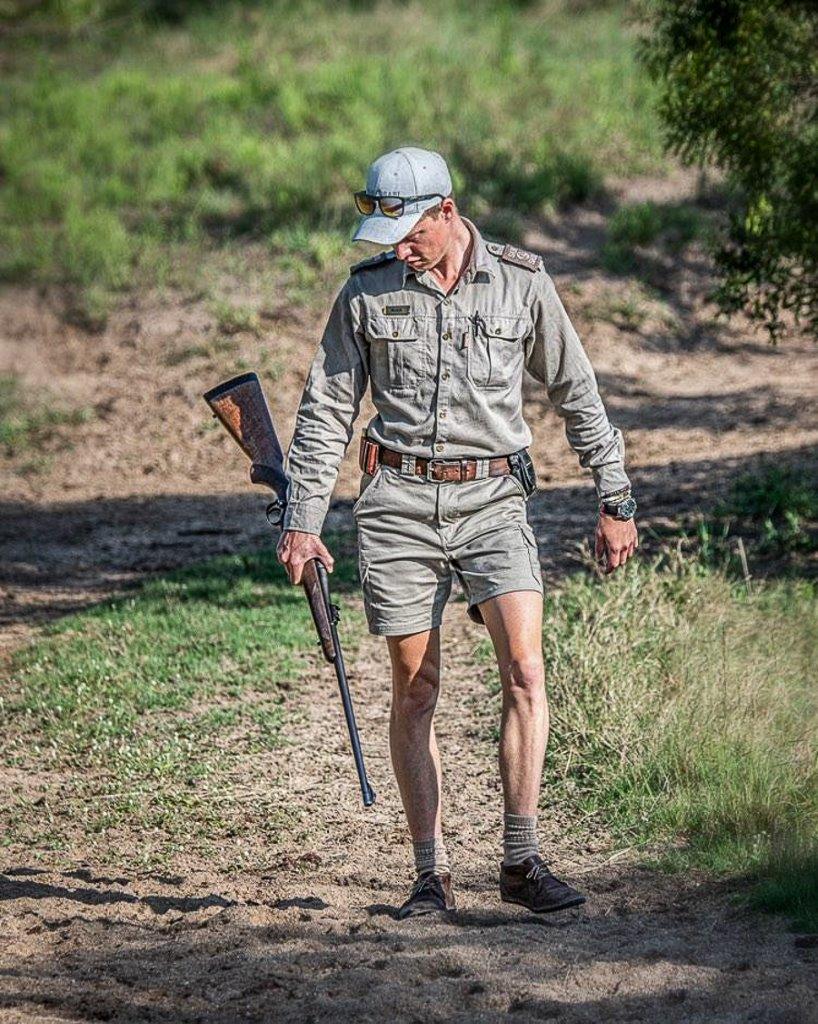
As guides we spend the majority of our days in the bush, surrounded by not just any animals but specifically the very well-known Big 5, which are named as the five animals that have killed most people while hunting on foot in Africa. As we spend most of our hours every day in the bush, not only on a safari vehicle but also on foot, tracking animals during safaris and conducting bush walks, we do need a backup plan if something goes wrong. As guides, we pride ourselves on knowing animal behaviour and predicting what the animal will do before it does it, but nature stays nature, and it is truly a wild place. The rifle we carry with us on safari and bushwalks is merely a last resort when you have no other choice.
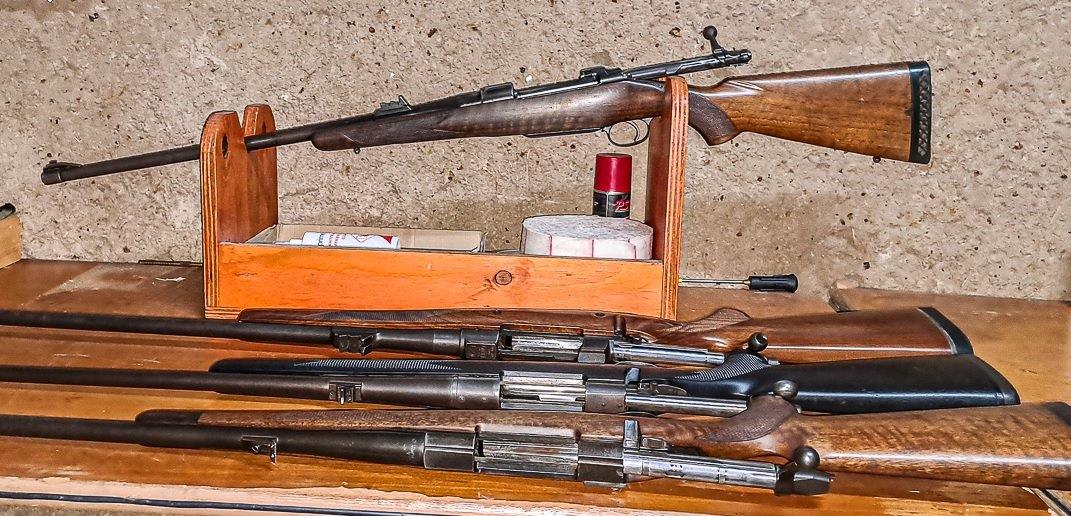
In the next photo, you can clearly see the bolt action rifles we use on safari.
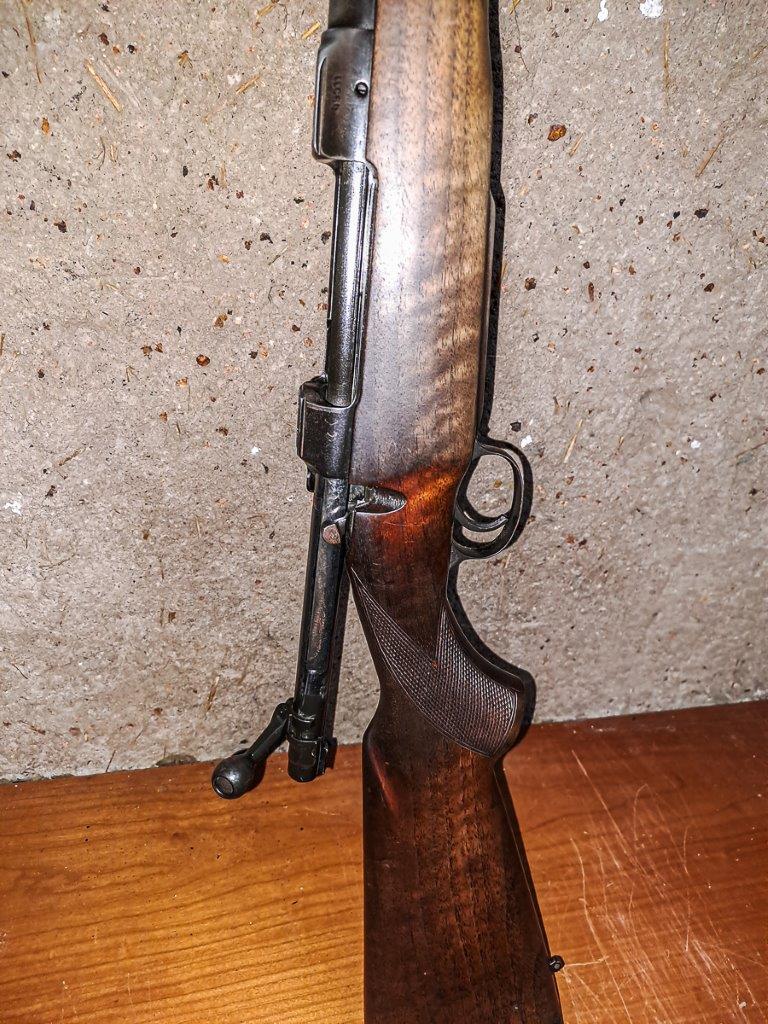
We are only spectators in nature, and we are still seen as a natural predator to all animals, while the majority of animals usually run away when they see a human on foot, you do get the odd occasion where this does not happen, for example, animals with young, predators on a kill or predators mating. We as guides know better and won’t deliberately go and walk in areas where we know any of the above scenarios might occur, but nature stays nature and animals move around, especially in our area where we are unfenced and not even us as guides know where the animals are at all times.
Even when we get into this kind of situation, we still have all our training and experience kicking in and handling the situation without even needing a rifle, but we can’t rely on this and value our own life as well. Let’s take a deeper look into which rifles we carry and why.
In South Africa, a .375 H&H is the minimum calibre we are allowed to conduct safari with in a Big 5 reserve as this rifle is the minimum power required to penetrate thick-skinned game if needs be. At Sabi Sabi, we carry .375 H&H (Holland Holland) and .458 WM (Winchester Magnum). Both these calibres I have mentioned are bolt-action rifles with a magazine capacity of either 3 or 5 rounds depending on the brand of the rifle.
.375 H&H
With this rifle we shoot a 300-grain bullet, usually being a monolithic solid bullet, meaning the bullet doesn’t expand after impact which allows for deeper penetrations. On average this bullet will travel approximately 2450 feet per second. When practising on the shooting range, this bullet weight can often be dropped to 270 grains, to have less friction in the barrel and make the barrel’s life expectancy longer. See below ammunition for the .375 H&H.
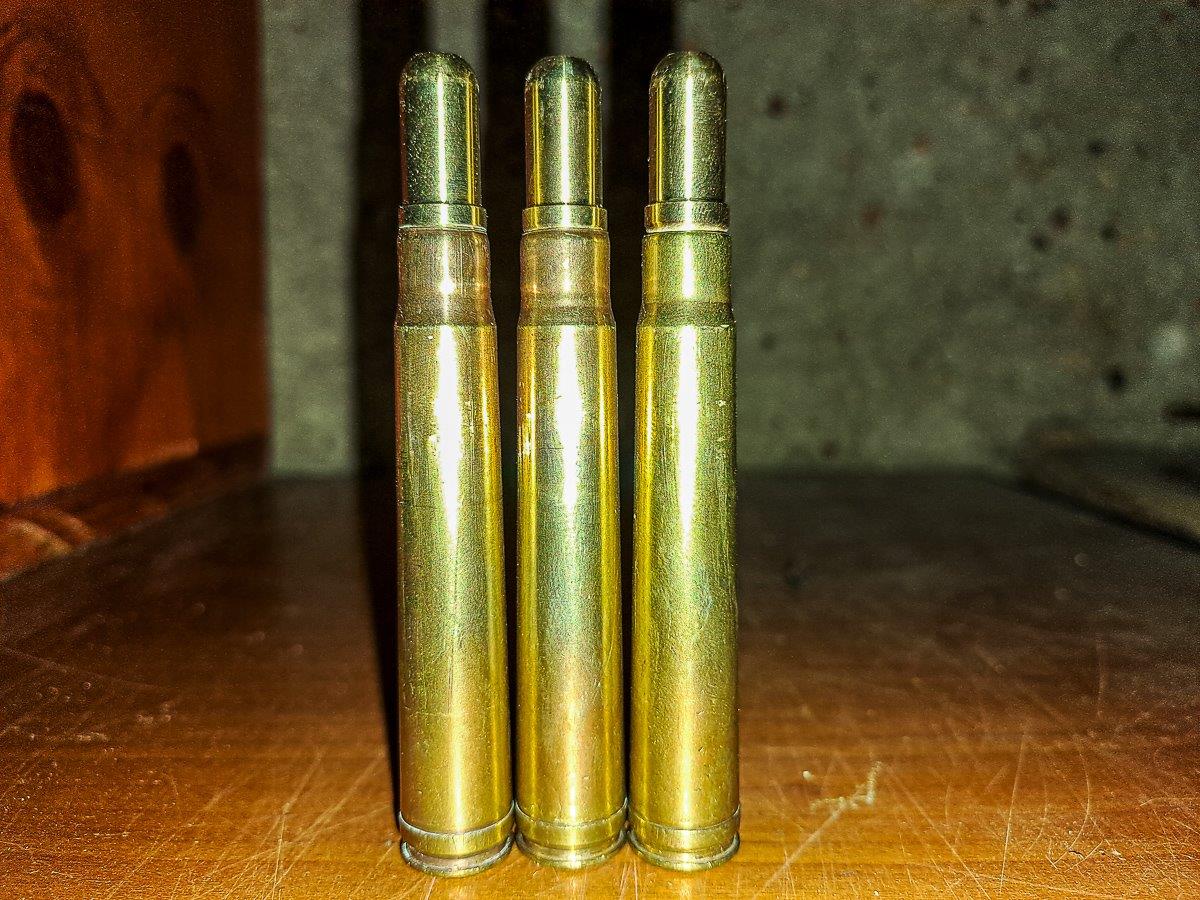
.458 WM
With this rifle we shoot a 500-grain bullet, also usually being a monolithic solid and travelling on average 2100 feet per second. Even though the speed is less than that of the .375, the .458 has much better penetration and hitting power because of the heavier bullet and the fact that it is almost always a compressed load, meaning the cartridge is loaded to a critical level where the bullet is pushing against the propellent inside the case, ensuring a lethal load. This can sometimes go all the way up to about 104% of the case volume. Recoil on this .458 WM is significantly more than the .375 H&H, but after seeing what the bullet does once it reaches its target, everything is explained by itself. When practicing with this caliber on the shooting range we will often shoot 420 grain bullets, again just because it is better for the barrel especially knowing you will shoot a lot more on the range compared to in the real situation. See below the ammunition for the .458 WM.
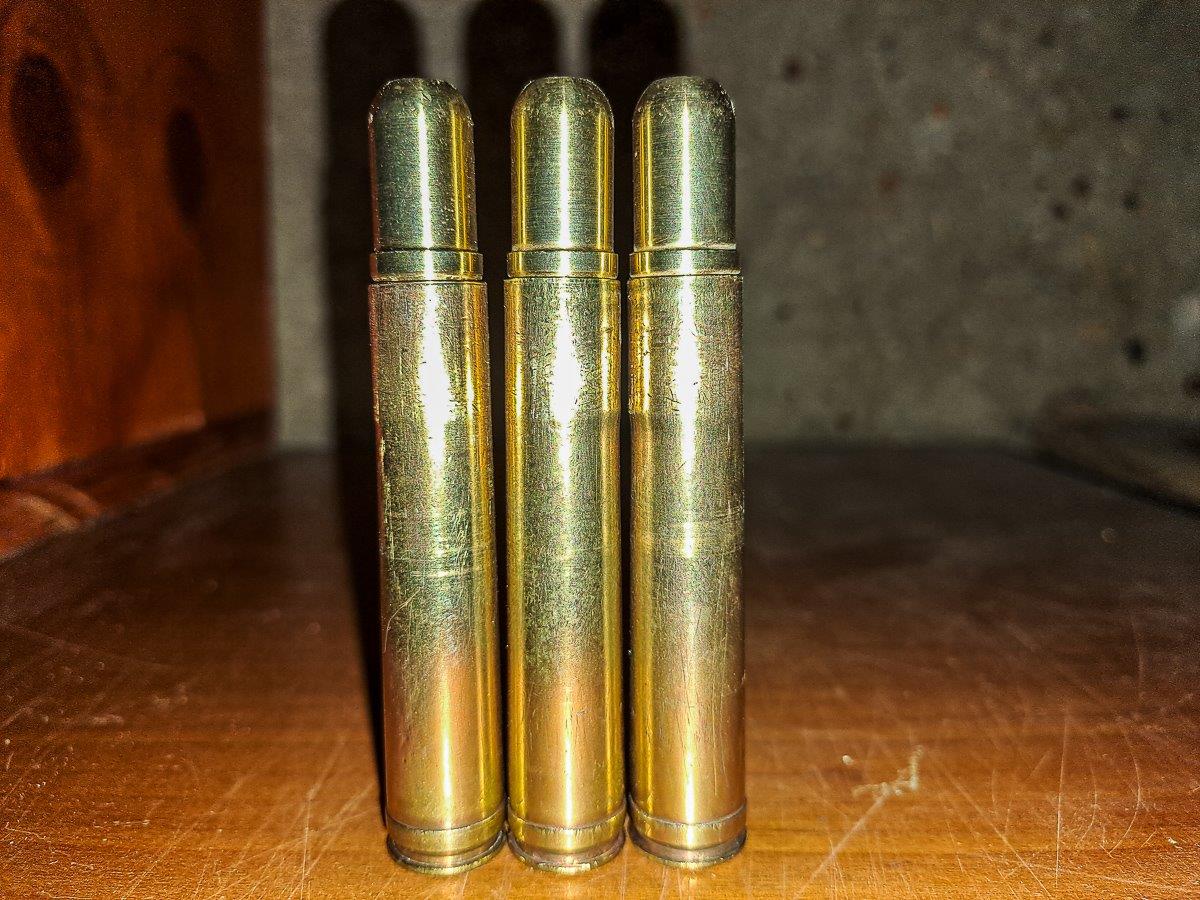
As guides, we continuously need to train and get things as muscle memory, in case we ever need to use some of our equipment, but we always hope that we never get into a situation where we have to as we love the animals we surround ourselves with. But animals don’t see us as humans the same way, and thus we need to be able to protect ourselves in some way if need be.
Our main purpose for carrying firearms on safari is strictly for last resort, we carry our rifles open sight, meaning we do not mount scopes on our rifles as it would be a problem finding your target at close range in a limited amount of time.


A lot of people usually ask about warning shots. This gets very difficult as every situation is different, every single time. The chance of an error happening while attempting a warning shot is just too high, especially when you have the lives of others in your hands. The rifle might jam after the warning shot and you won’t have enough time to chamber another round before the animal is on top of you; ricochets is also possible if you fire your rifle hitting a rock and angled tree; and firing a shot into the air is also not possible as this bullet can travel up to a couple of kilometres and you never know what it might hit while coming down due to gravity. Because of this we only carry rifles as a last resort and do not approach any animal with the mindset of having a firearm, we only approach up to a safe distance where viewing is possible without putting any life at danger. If the situation changes and the animal charges, we will still try everything to try and stop the charge, making a lot of noise, screaming, clapping hands, or waving arms before moving to the last resort. If this still doesn’t stop the charge, we will then move over to chambering our rifles and being ready for when the animal is only a couple of metres away and we are almost 100% sure the charge is not going to stop, then we will shoot to kill. This is not as easy as it sounds and luckily for us, our training is very enhanced as we don’t run into situations like these easily.
Another question that is commonly asked is why we don’t use tranquilising darts instead of live ammunition. Now unfortunately even the strongest drugs we get to immobilise big animals there is still a 2–5-minute window before the animal goes down after the dart enters the body. It only takes an animal a couple of seconds to attack and kill and only live ammunition will save you at this point should you be in the situation where you must put the animal down immediately.


Exercise plays a key role when it comes to shooting and it is something you must continuously do to become and stay a good shot. At Sabi Sabi, we try and take our rangers once a cycle (6 weeks) to the shooting range to go and shoot and keep the muscle memory. Taking a shot at an animal coming at you full speed is no easy task and thus the intense training we as guides must go through to prepare you if anything ever has to happen.
The reloading of ammunition makes it cheaper to shoot, more reliable and you can load your own loads for practise ammunition which usually isn’t as highly compacted as the rounds we use while on safari. By doing this, we prevent the barrel and grooves on the inside from getting damaged and prolong the lifespan of all barrels, keeping our rifles in mint condition. As rangers, our rifle is the most important tool we carry and it takes a great deal of responsibility to keep the storage and handling safe, something you learn very quickly when surrounding yourself with firearm-conscious people.
A comparison of the .375 H&H and .458 WM ammunition. You can clearly see the difference in length and width, the .375 H&H being the longer, yet thinner round whereas the .458 WM is must shorter but thicker. Hence this difference in case length and width, each case is adapted for its bullet weight and volume of the inside, influencing the amount of propellent that can be loaded as a safe load to reach the perfect result.
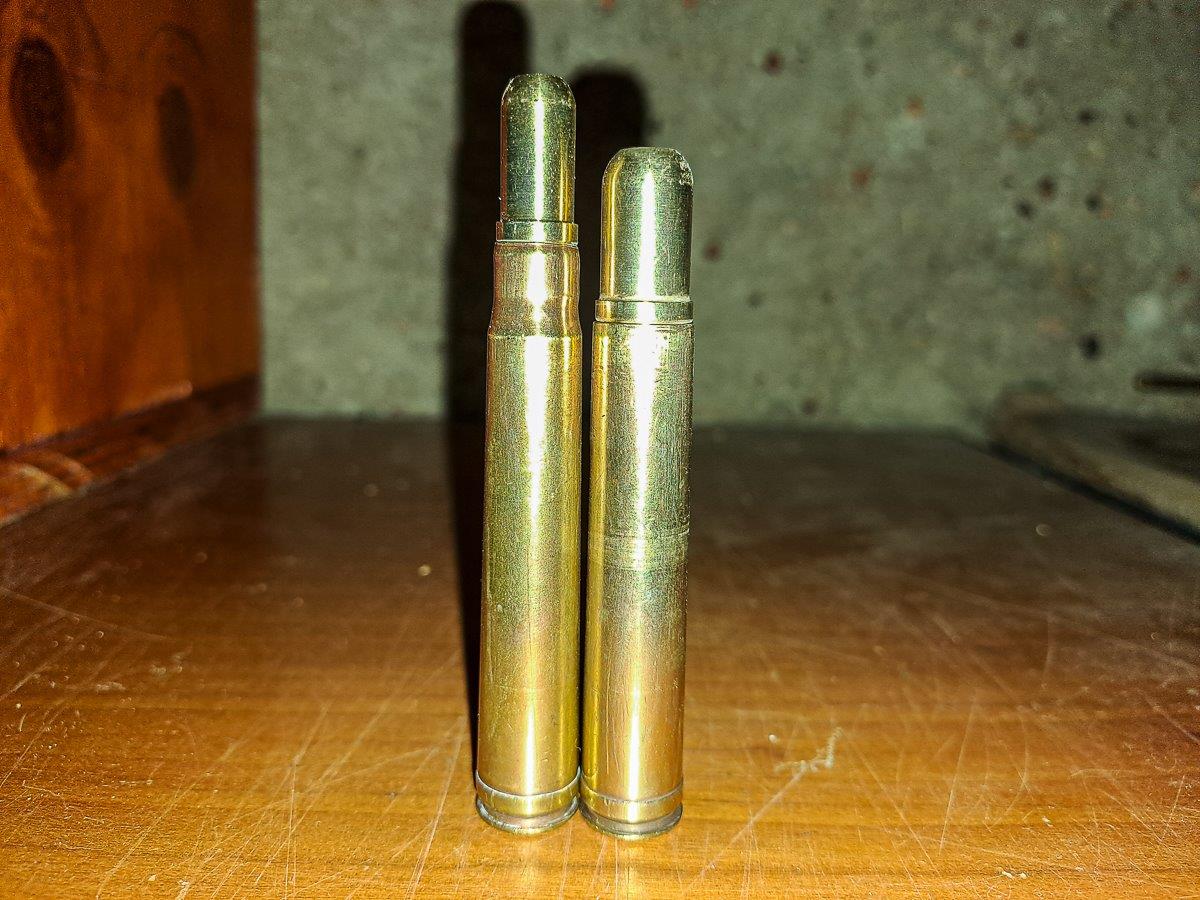
Lastly, even though this is a critical tool we carry, it is something we very rarely use in real situations, and it is all a mere safety protocol to ensure the safety of all our guests walking through our doors. We are here to protect and conserve our natural environment and have as little of an impact as we possibly can. We have a massive passion for nature and will always strive to deliver safe encounters with animals.
Blog by Ruan Mey (Earth Lodge Ranger)







